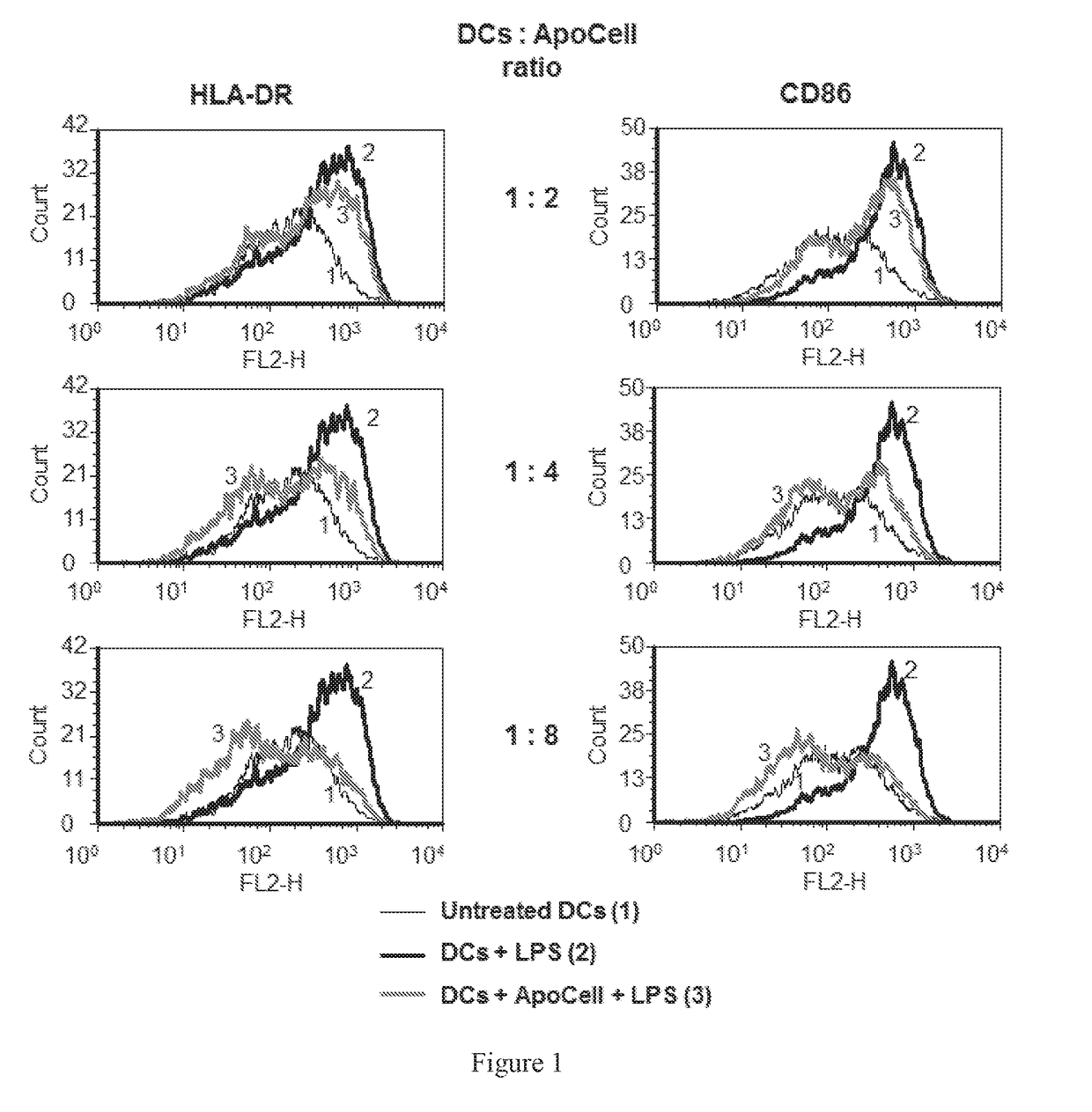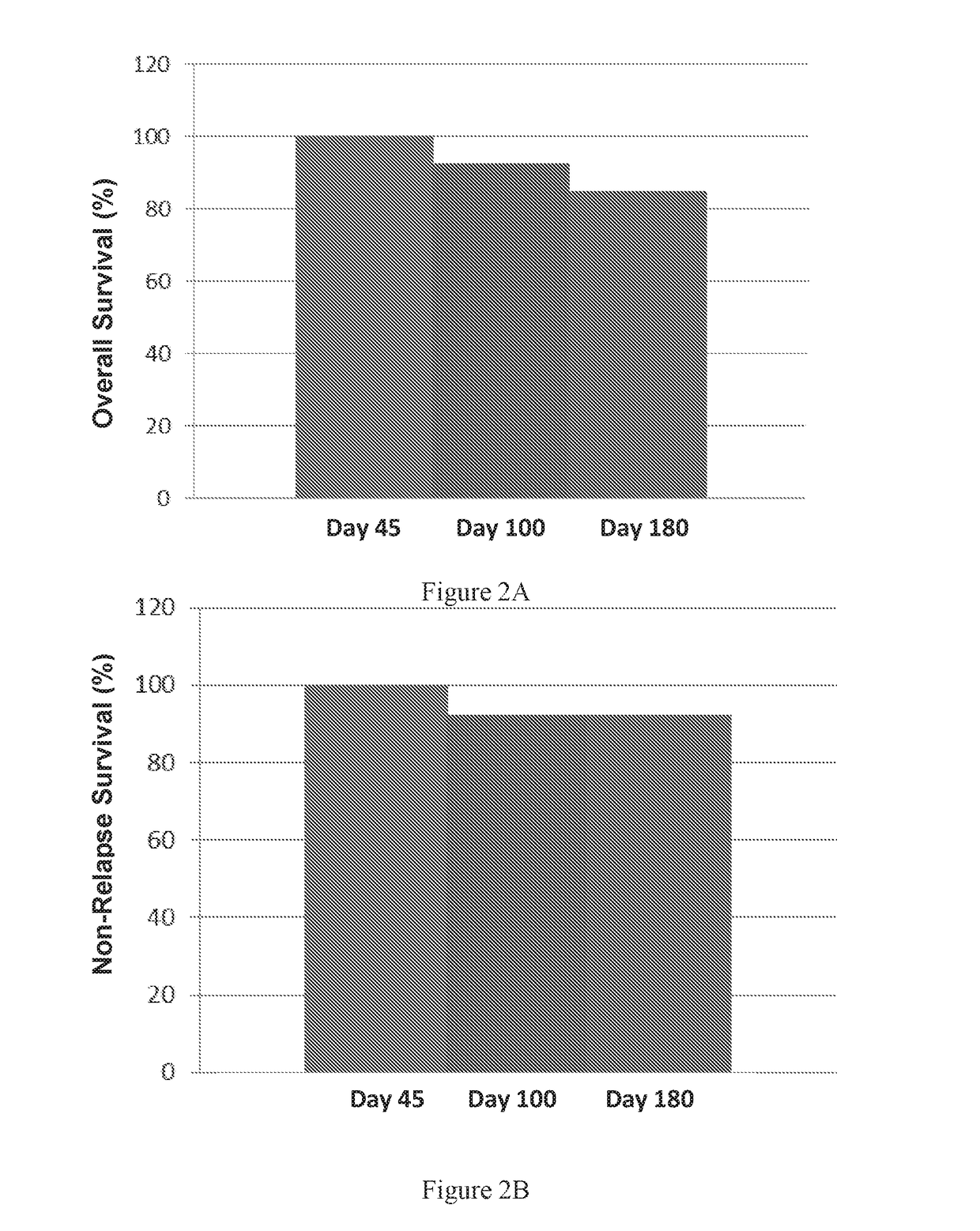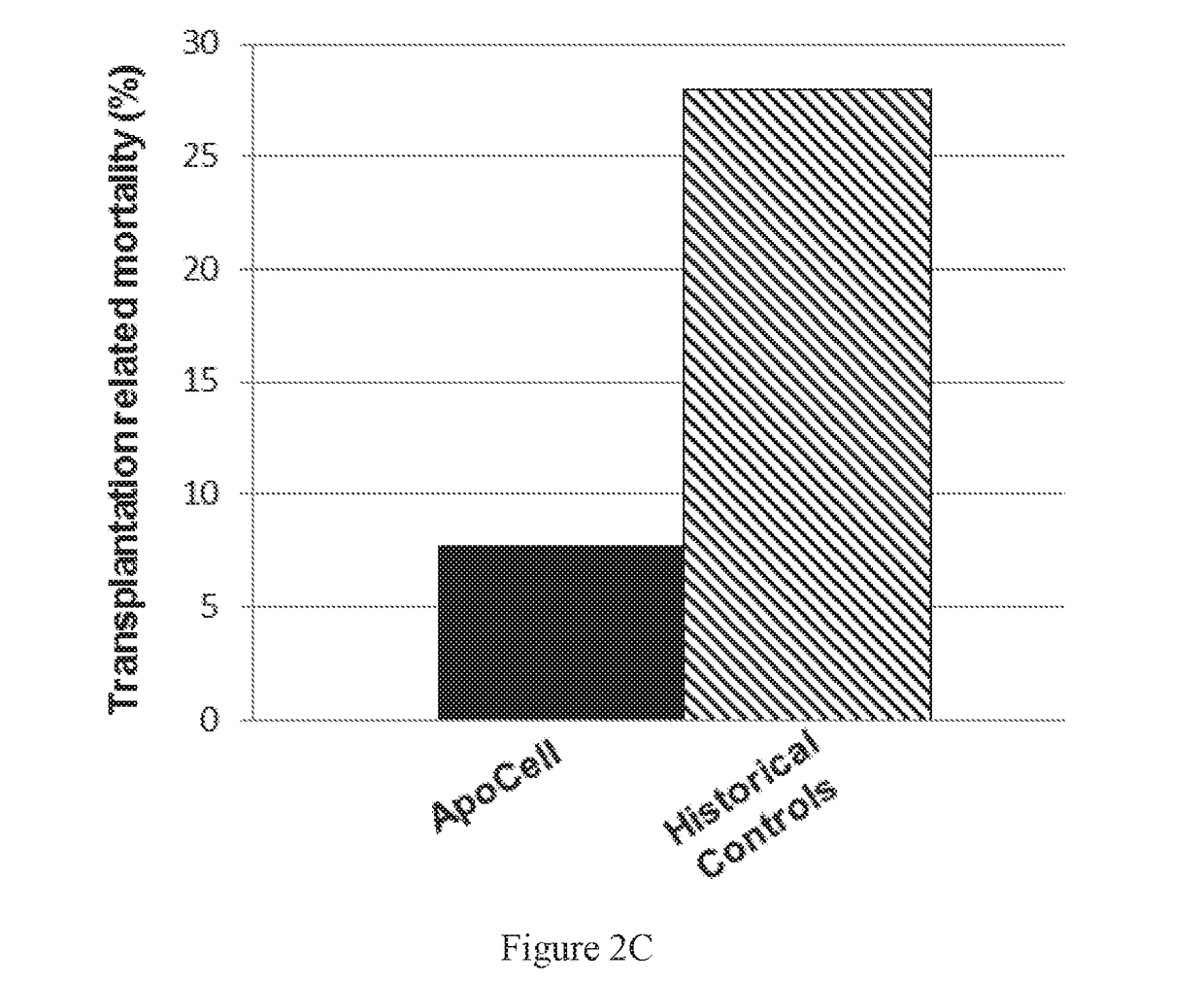Therapeutic apoptotic cell preparations, method for producing same and uses thereof
a technology of apoptotic cells and preparations, which is applied in the field of therapeutic apoptotic cell preparations, can solve the problems of low and/or unstable cell yield between different preparations, adverse effects on cell yield, etc., and achieve the effect of reducing hepatotoxicity
- Summary
- Abstract
- Description
- Claims
- Application Information
AI Technical Summary
Benefits of technology
Problems solved by technology
Method used
Image
Examples
example 1
Infusion of Allogeneic Apoptotic Cells as Prophylaxis of GVHD in Myeloablative Allogeneic Bone Marrow Transplantation is Safe
Patient, Donor, and Graft Characteristics
[0294]Median total number of cell transplanted and CD34+ cells infused into recipients were 13.6×108 / kg (range, 9.3-29.5 108 / kg) and 7.2×106 / kg (range, 3.7-22.4×106 / kg), respectively (Table 1). Patient, disease, and transplantation characteristics are summarized in Table 1. The most common diagnosis was acute lymphoblastic leukemia (ALL; n=7, 54%), followed by acute myeloid leukemia (AML; n=5, 38%) and one patient with chronic myeloid leukemia (CML; n=1, 7.7%). In patients with AML, one patient presented with disease de novo, and four patients developed AML from an antecedent myelodiplastic syndrome (MDS). A total of five patients with ALL were in first complete remission (CR1), one patient was in second complete remission (CR2) and one patient in second partial remission (PR2). A total of five patients with AML were in...
example 2
Infusion of Allogeneic Apoptotic Cells Reduces High Grade GVHD in Patients Undergoing Myeloablative Allogeneic Bone Marrow Transplantation
[0306]Acute GVHD was assessed through day 100 of the study in 12 out of 13 patients and in one patient in the second treatment group through day 87. All were included in the day-100 cumulative incidence. The day-100 cumulative incidences of grades II through IV and III through IV acute GVHD (aGVHD) for all patients were 23.1% and 15.4%, respectively (FIG. 4). Acute GVHD was assessed through day 180 of the study in 10 out of 11 patients. The median times to onset of grades II through IV and III through IV acute GVHD were 31 days (range, 31-44 days) and 47 days (range, 31-62 days), respectively. No patient developed acute GVHD beyond day 100 after transplantation. Ten of 11 patients were assessed for aGVHD at day 180. One of 10 patients (10%) was with persistent skin aGVHD grade 1 with overall severity grade 1 on day 180 of the study. Of note is tha...
example 3
Reduced Incidence of Hepatotoxicity in Transplant Patients Receiving a Single Dose of Apoptotic Cells
[0310]The number of transplant patients developing hepatotoxicity in all four of cohorts I-IV (n=13; column 2), receiving from 35-210×106 apoptotic cells was compared with that of matched controls from hospital records (n=18), and with the long-term documented transplant patients (n=1148; Gooley et al, ibid.).
[0311]Only one patient in the treatment group developed hepatotoxicity (7.7%; FIG. 5A, column 2), compared to 39% (FIG. 5A, column 1) of the matched historical controls and 20% (FIG. 5A, column 3) in the long-term documented transplant patients. Of note, no hepatic toxicity of GVHD was documented in the three higher dosages treatment groups (cohorts II-IV) treated with the apoptotic cell preparation of the invention (FIG. 5B), compared to 39% observed among the matched historical controls.
PUM
| Property | Measurement | Unit |
|---|---|---|
| concentration | aaaaa | aaaaa |
| concentration | aaaaa | aaaaa |
| concentration | aaaaa | aaaaa |
Abstract
Description
Claims
Application Information
 Login to View More
Login to View More - R&D
- Intellectual Property
- Life Sciences
- Materials
- Tech Scout
- Unparalleled Data Quality
- Higher Quality Content
- 60% Fewer Hallucinations
Browse by: Latest US Patents, China's latest patents, Technical Efficacy Thesaurus, Application Domain, Technology Topic, Popular Technical Reports.
© 2025 PatSnap. All rights reserved.Legal|Privacy policy|Modern Slavery Act Transparency Statement|Sitemap|About US| Contact US: help@patsnap.com



